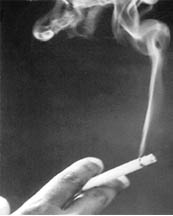VIETNAM
 Multinational toba-cco companies faced with shrinking markets and increasing restrictions in the industrialised world, are wooing consumers throughout the newly-opened econo-mies of Loas, Cam-bodia, Burma and Vietnam.
Multinational toba-cco companies faced with shrinking markets and increasing restrictions in the industrialised world, are wooing consumers throughout the newly-opened econo-mies of Loas, Cam-bodia, Burma and Vietnam.
Using slick advertising and dollar power, the companies are promoting an image of cigarette-makers that is synonymous with entrepreneurship, individual freedom and unlimited opportunities. "The big western tobacco companies have made inroads into Indochina similar to their forays in eastern Europe after the collapse of the Berlin wall," says an Asian diplomat in Phnom Penh.
According to Myo Paing, a National Programme Officer of the World Health Organisation in Yangon, Myanmar, the increase in the number of smokers in Burma could be anywhere between 20 to 30 per cent a year.
In Cambodia and Viet-nam, the figures are similar or even higher as there are fewer restrictions on cigarette advertisements and sales. Everywhere in the cities of Hanoi, Ho Chi Minh and Phnom Penh, neonlit cigarette hoardings dominate the skylines.
Their tactics in Indochina appear to be the same as those adopted in Eastern Europe immediately after the collapse of the Soviet Union. The former Soviet Bloc constitutes the second largest toba-cco market in the world after China.
However, Asia is not new to all this as it was in the 1980s that Ameri-can tobacco companies made a major bid to force open markets in Taiwan, Thailand, South Korea and Japan - then dominated by government - owned toba-cco monopolies. Taiwan was the first to open up in 1986. The result: two years before the American tobacco invasion, a survey of high school students in Taiwan's capital city, Taipei found that 26 per cent of boys and one per cent of girls had tried smoking. After six years, the figure went up to 48 per cent for boys and 20 per cent for girls.
In Bangkok, industry analysts say that although western companies have yet to invest in manufacturing in a big way in Indochina, they already control a substantial portion of these markets using similar strategies as those in eastern Europe. "Local authorities are hesitant to do anything against large tobacco companies because they are afraid of scaring away foreign investors who see cigarette makers as some kind of pioneers in uncharted econo-mies," says Ukrist Pathama-nand, a regional economist at Bangkok's Chulalangkorn University.
Vietnam has the highest reported male smoking prevalence rate of 72.8 per cent in the world. Nearly 15,000 workers and more than 100,000 farmers are employed in the tobacco industries. Cigarette imports have been banned since 1990, but illegal imports are estimated to fill 10 per cent of the domestic demand. In 1994, the government allowed Rothmans, Philip Morris and bat to produce non- Vietnamese brand cigarettes in joint ventures with the Vietnam National Tobacco Corporation.
Along with hiv/aids , the increase in the number of smokers constitutes the biggest threat to public health in Indochina, says Anti-smoking activists. The situation however gets worse as the governments in Burma, Vietnam and Cambodia have cut back spending on public health facilities in pursuit of free market economic policies.
Experts, however, say that due to the recent collapse of southeast Asian economies - fuelled by currency devaluation - it is going to be difficult for local authorities in the region to resist the onslaught of the tobacco companies.
Related Content
- Disruption and Disarray: An analysis of pangolin scale and ivory trafficking, 2015-2024
- 2024 Disasters in Numbers
- Visioning to implementation: national transport decarbonization policies that match climate targets in China, India, and Vietnam
- National Plastic Action Partnerships (NPAP): a multistakeholder approach to addressing plastic pollution in Developing Countries
- Air pollution and the world of work in southeast Asia: findings from regional case studies
- Mapping local plastic recycling supply chains: insights from selected cities in India
